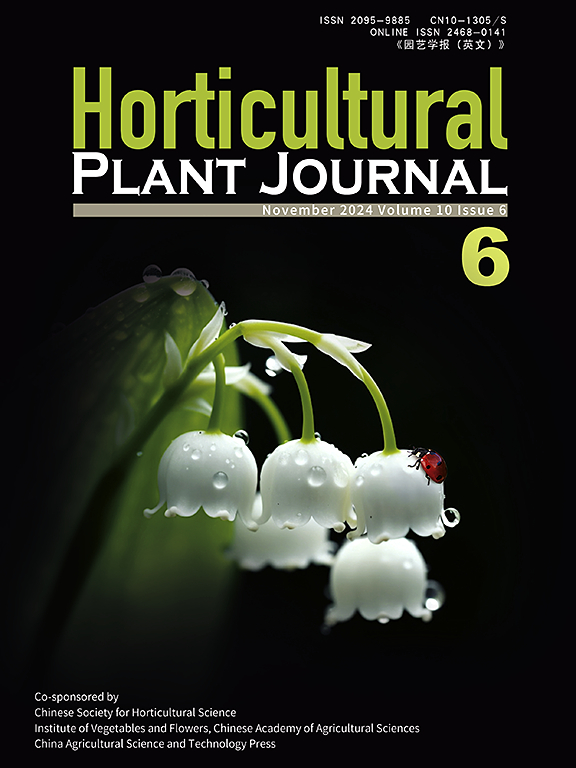A molecular module with PheIAA17 as the core significantly promotes lateral root germination
IF 5.7
1区 农林科学
Q1 HORTICULTURE
引用次数: 0
Abstract
Monocot root systems comprise a large number of lateral roots to allow them to survive and colonize land. Auxin signaling pathways centered on Aux/IAA play a crucial role in lateral root development. However, in non-model monocot plants, the effects of Aux/IAA on lateral root initiation and number remain largely unknown. The present study transformed以 PheIAA17 为核心的分子模块可显著促进侧根萌发
单子叶植物根系由大量侧根组成,使其能够存活并在土地上定居。以 Aux/IAA 为中心的叶绿素信号通路在侧根发育过程中起着至关重要的作用。然而,在非模式单子叶植物中,Aux/IAA 对侧根萌发和数量的影响在很大程度上仍然未知。本研究将毛竹 Aux/IAA 家族成员 PheIAA17 转化到水稻中,发现它能显著促进植株产生侧根并提高生根率。定量实验表明,PheIAA17的过表达显著影响了ARF家族成员的表达。系统发育和启动子分析表明,PheARF3-2属于B类ARF,启动子区域含有辅助素响应元件。酵母单杂交和双荧光素酶报告实验的结果证实,PheIAA17与PheARF3-2启动子的特定片段结合,抑制了其转录活性。Y2H和BiFC分析表明,PheIAA17和PheIAA30-3可在体外和体内发生物理相互作用。综上所述,本研究报告了一个以 PheIAA17 为中心的新分子模块,它通过增加侧根来指导植物改变根的形态。
本文章由计算机程序翻译,如有差异,请以英文原文为准。
求助全文
约1分钟内获得全文
求助全文
来源期刊

Horticultural Plant Journal
Environmental Science-Ecology
CiteScore
9.60
自引率
14.00%
发文量
293
审稿时长
33 weeks
期刊介绍:
Horticultural Plant Journal (HPJ) is an OPEN ACCESS international journal. HPJ publishes research related to all horticultural plants, including fruits, vegetables, ornamental plants, tea plants, and medicinal plants, etc. The journal covers all aspects of horticultural crop sciences, including germplasm resources, genetics and breeding, tillage and cultivation, physiology and biochemistry, ecology, genomics, biotechnology, plant protection, postharvest processing, etc. Article types include Original research papers, Reviews, and Short communications.
 求助内容:
求助内容: 应助结果提醒方式:
应助结果提醒方式:


